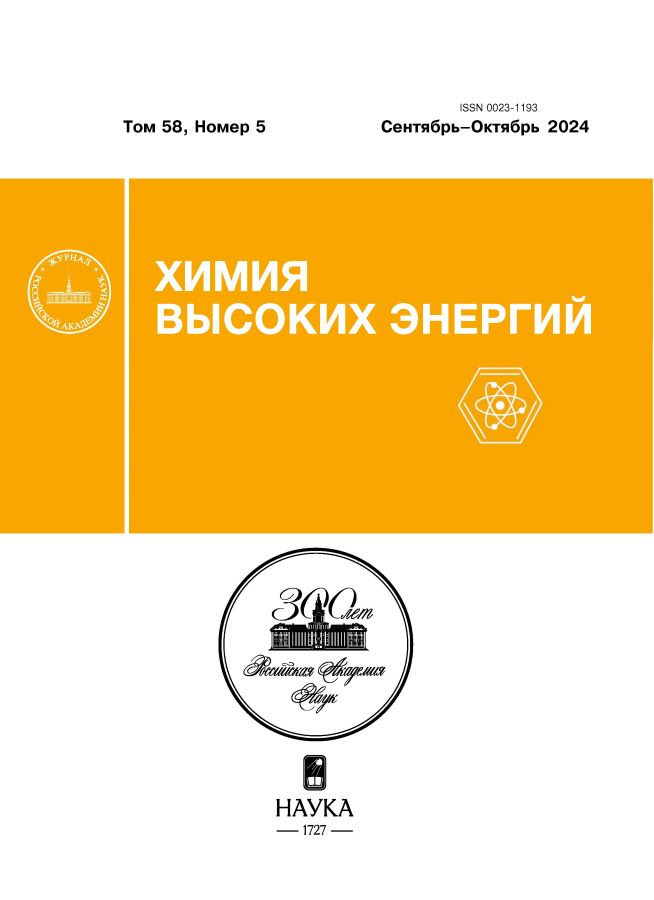Protein and amino acid fluorescence analysis as a method for evaluating bactericidal effectiveness
- Autores: Piskarev I.M.1
-
Afiliações:
- Moscow State University
- Edição: Volume 58, Nº 5 (2024)
- Páginas: 347-353
- Seção: PHOTONICS
- URL: https://kazanmedjournal.ru/0023-1193/article/view/684840
- DOI: https://doi.org/10.31857/S0023119324050019
- EDN: https://elibrary.ru/TYLGJS
- ID: 684840
Citar
Texto integral
Resumo
The degradation of albumin and its constituent amino acids tryptophan, tyrosine, and phenylalanine under the influence of corona discharge cold plasma, pulsed radiation of hot plasma, and 253.7-nm UV light from a mercury lamp has been studied. The concentration of products before and after treatment was determined by measuring the fluorescence yield. The reaction mechanisms leading to protein degradation are oxidation, nitration, and reduction of disulfide bonds. The degree of protein and amino acid degradation is compared with the effect of hydrogen peroxide. The possibility of assessing the bactericidal effectiveness based on fluorescence yield is discussed.
Palavras-chave
Texto integral
Sobre autores
I. Piskarev
Moscow State University
Autor responsável pela correspondência
Email: i.m.piskarev@gmail.com
Skobeltsyn Research Institute of Nuclear Physics
Rússia, MoscowBibliografia
- Shlapakova, T.I., Kostin, R.K., and Tyagunova, E.E. // Russ. J. Bioorg. Chem., 2020, vol. 46, № 5, p. 657.
- Bruggeman, P.J., Kushner, M.J., Locke, B.R. et al. // Plasma Sources Sci. Technol., 2016, vol. 25, p. 053002.
- Weltman, K.D., Kolb, J.F., Holub, M. et al. // Plasma Process. Polym., 2018, vol. 16, № 1, p. e1800118.
- Rezaei, F., Vanraes, P., Nikiforov, A. et al. // Materials, 2019, vol. 12, p. 2751.
- Van Gils, C.A.J., Hofmann, S., and Boekema, B.K.H.L. // J. Phys. D: Appl. Phys., 2013, vol. 46, p. 175203.
- Wood, J.P. and Adrion, A.C., Environ. Sci. // Technol., 2019, vol. 53, № 8, p. 4045.
- Estifaee, P., Su, X., Yannam, S.K. et al. // Sci. Rep., 2019, vol. 9, p. 2326.
- Pattison, D.I., Rahmanto, A.S., and Davies, M. // Photochem. Photobiol. Sci., 2012, vol. 11, p. 38.
- Antoshina, D.V., Balandin, S.V., and Ovchinnikova, T.V. // Biochemistry (Moscow), 2022, vol. 87, № 11, p. 1327.
- Matin, R., Yousefzadeh, S., Ahmad, E. et al. // Food Chem. Toxicol., 2018, vol. 116, p. 129.
- Scappini, F., Capobianco, M.L., Casadei, F. et al. // Int. J. Astrobiol., 2007, vol. 6, № 4, p. 281.
- Piskarev, I.M. // High Energy Chem., 2020, vol. 54, № 3, p. 205.
- Piskarev, I.M. // IEEE Trans. Plasma Sci., 2021, vol. 49, № 4, p. 1363.
- Piskarev, I.M., Astaf’eva, K.A., and Ivanova, I.P. // Sovrem. Tekhnol. Med., 2018, vol. 10, № 2, p. 90.
- Piskarev, I.M. // Plasma Chem. Plasma Process., 2021, vol. 41, p. 1347.
- Lobachev, V.L. and Rudakov, E.S. // Usp. Khim., 2006, vol. 75, № 5, p. 422.
- Luo, Y.-R. Handbook of Bond Dissociation Energies in Organic Compounds, Boca Raton: CRC, 2003.
- Corpas, F.J., Gonzalez-Gordo, S., and Palma, J.M. // Plant Stress, 2021, vol. 2, p. 10006.
- Ivanova, I.P. and Piskarev, I.M. // High Energy Chem., 2022, vol. 56, № 5, p. 339.
- Mandal, B. and Basu, B. // RSC Adv., 2014, vol. 4, p. 13854.
- Chung, W.K., Russell, B., and Yang, Y. et al. // Biotechnol. Bioeng., 2017, vol. 114, p. 1264.
- Bechtel, T.J. and Weerapana, E. // Proteomics, 2017, vol. 17, № 6, p. 1.
- Piskarev, I.M., Ivanova, I.P., Trofimova, S.V., and Burkhina, O.E. // High Energy Chem., 2015, vol. 49, № 1, p. 72.
- Davoudi, M., Ehrampoush, M.H., Vakili, T. et al. // Int. J. Environ. Health Eng., 2012, vol. 1, № 2, p. 1.
- Khurshidi, H., Rafig, M., Nazir, F. et al. // Pure Appl. Biol., 2019, vol. 8, № 4, p. 2238.
Arquivos suplementares













